Yontan Field Raid: World War II’s “Suicide Squad”
April 13th, 2023
10 minute read
A great many battles have slipped into the fog of time waiting to be rediscovered. For those not familiar with the Yontan Airfield Raid, this desperate action to turn the tide of war may seem shocking. For those that know the tale, Tom Laemlein offers some details you may not yet know.
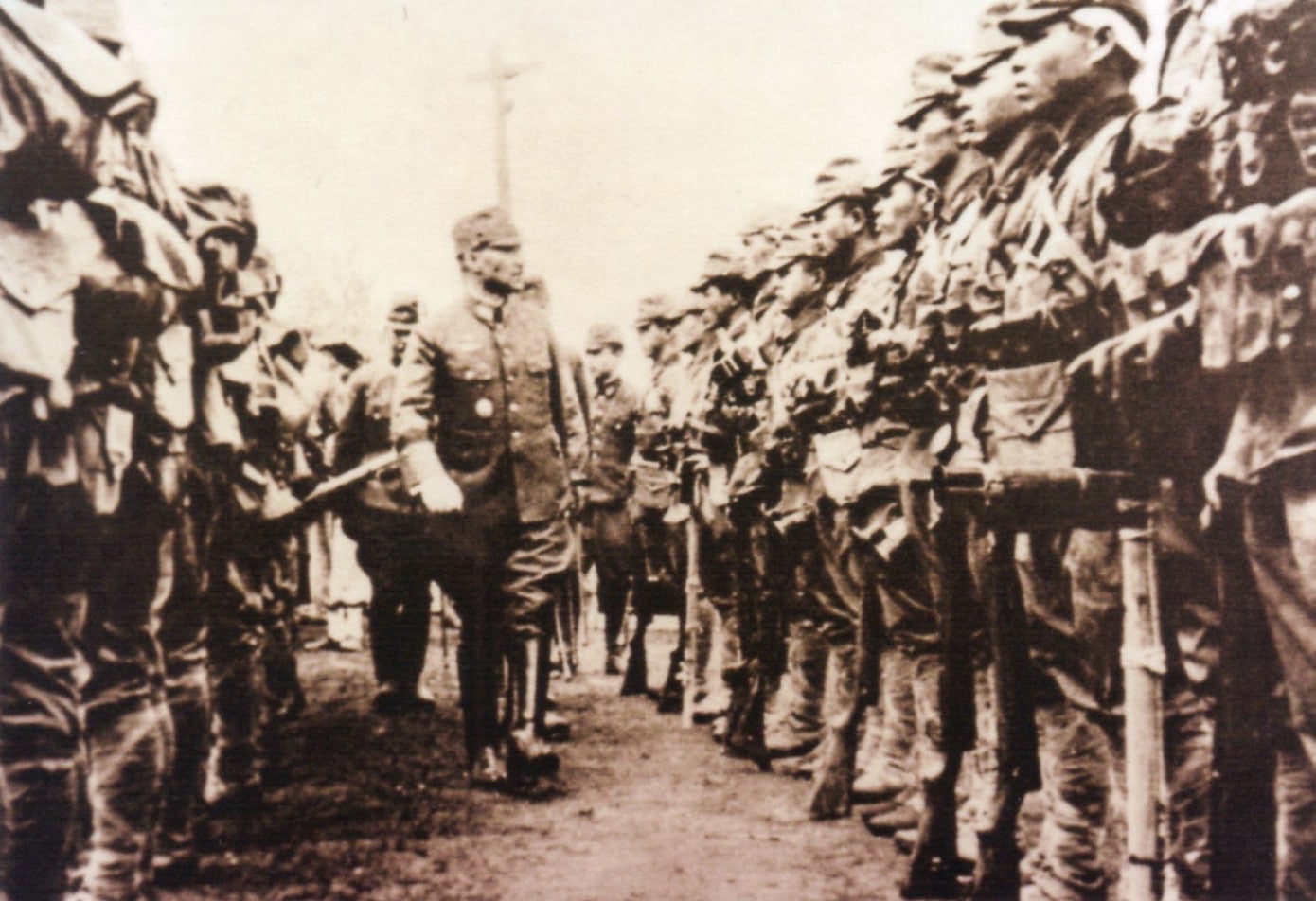
By the end of 1944, Japanese air attacks against the U.S.A.A.F. B-29 bases in the Marianas had proven completely inadequate to stem the growing tide of destructive raids by the big bombers against the Japanese home islands.
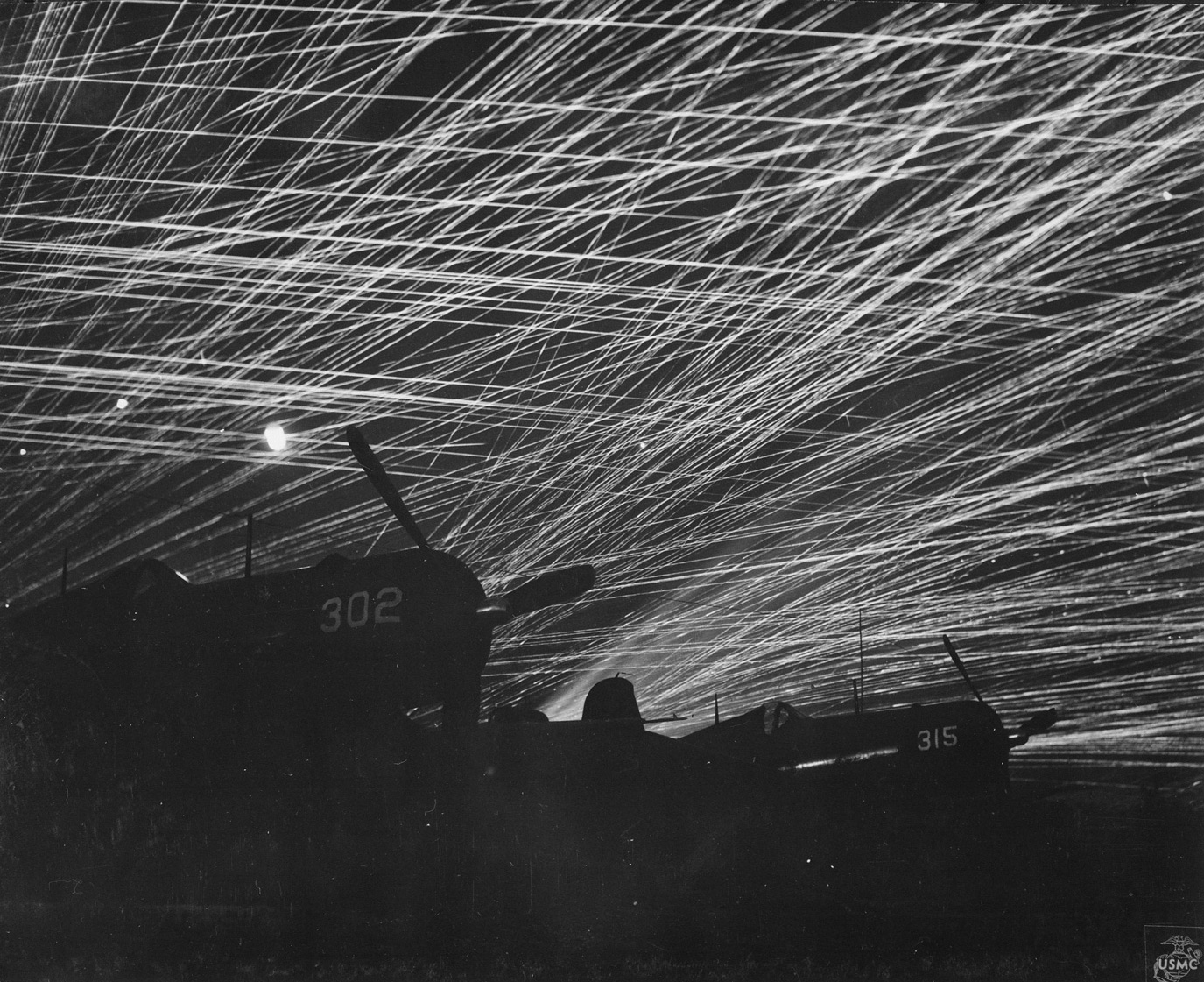
Considering this troubling development, Japanese planners developed a program to deliver “suicide commandos” by air to destroy the B-29s and damage their bases. To fulfill this need, the “Giretsu” Airborne Unit was formed, assembling experts in sabotage and demolition.
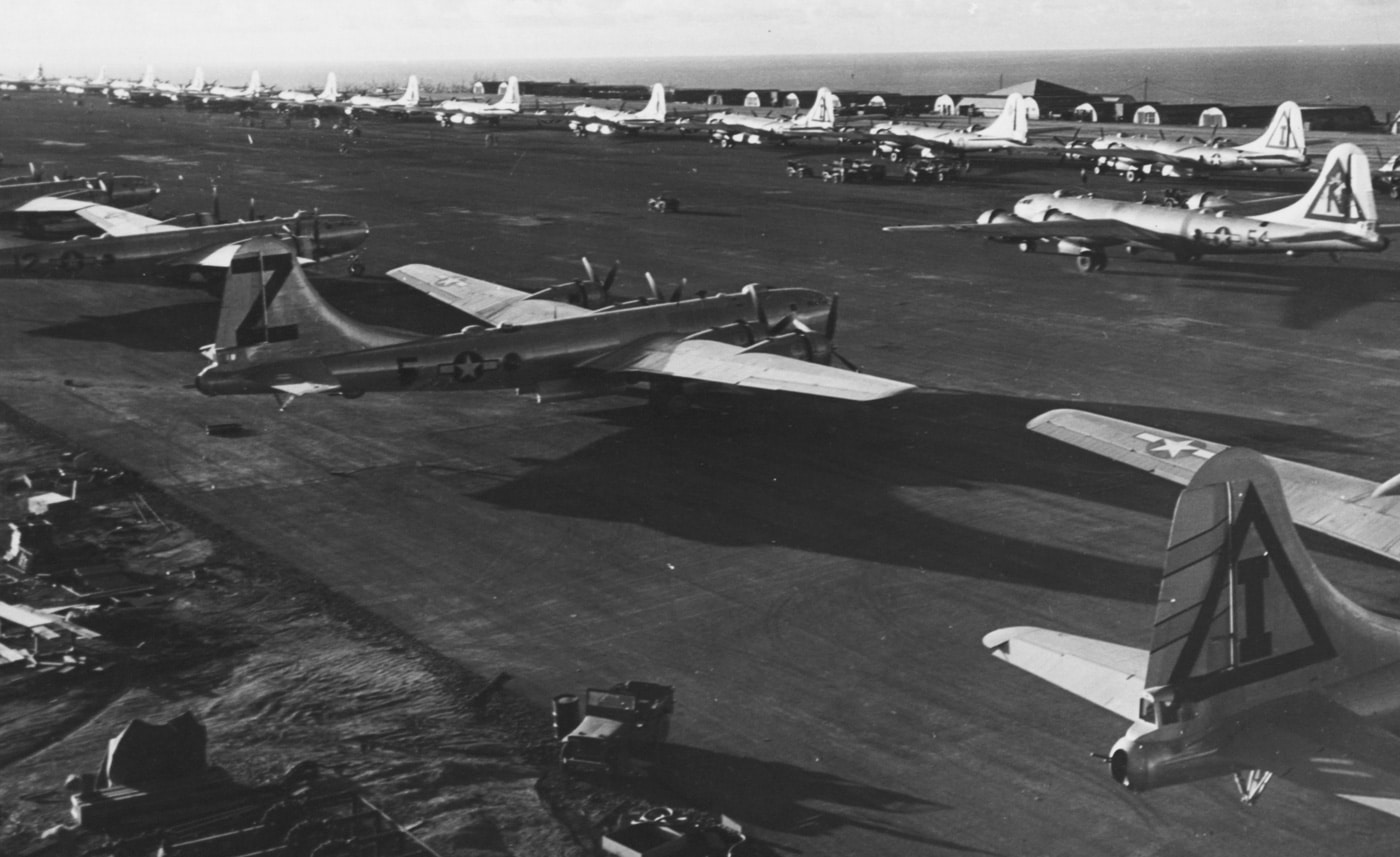
Mock-ups were prepared of the primary target, the Boeing B-29 bomber. It was soon learned that special weapons would be needed for the mission, as the standard Type 99 magnetic mine would not adhere to the B-29’s aluminum skin.
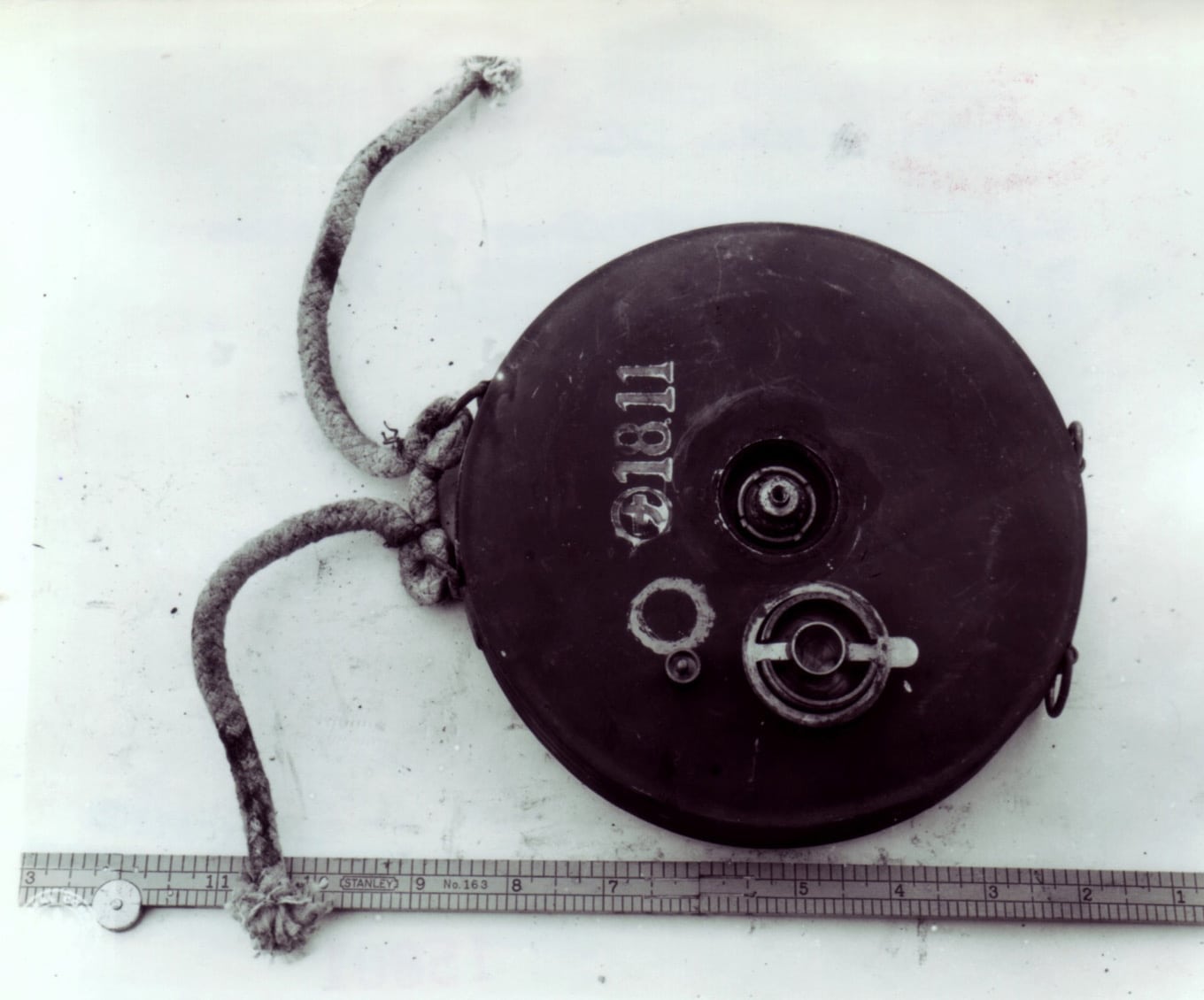
A special pole charge with a suction cup was developed (using 4.5 pounds of explosive), along with a 15-foot “chain charge” designed to be thrown across the wing of the target aircraft — the detonation would separate the wing from the fuselage.
The Giretsu Airborne Attack Unit
Intense, almost “ninja-like” training for the commandos followed, and each raider was expected to destroy at least two aircraft to maximize the impact of the raids. Preparations continued for the attack on the B-29’s Saipan bases, scheduled for January 17, 1945. American attacks on the refueling fields on Iwo Jima, in preparation for the American aviation there, forced the Giretsu unit to cancel the Marianas attack. A subsequent plan for an attack on the Iwo Jima airfields captured by American troops in March 1945 was also canceled.
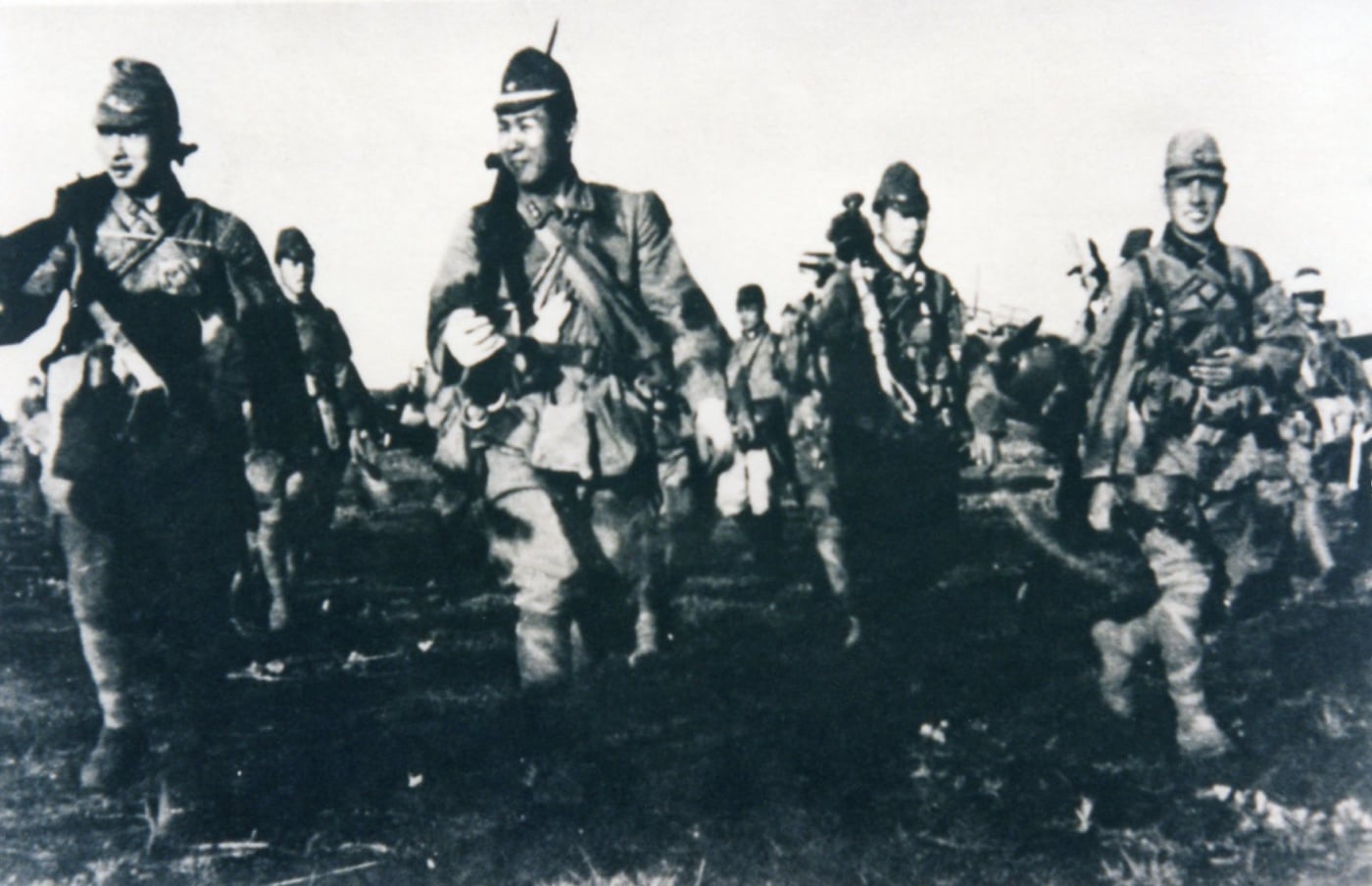
When U.S. forces landed on Okinawa on April 1, 1945, the Japanese began a series of massive airstrikes featuring increasing deployment of Kamikaze aircraft. After American forces had secured Yontan Airfield on Okinawa, this base became a significant staging area for U.S. interceptors, which took a large toll on the Kamikaze attackers in the many “Kikusui” offensives (massed attacks by suicide aircraft).
On May 15, 1945, the Japanese 6th Air Army requested use of the Giretsu Commando Unit to neutralize the American’s Okinawa airbases. The commandos moved to Kengun airfield on Kyushu in preparation for “Operation Gi”.
Suicide Squads: The Suicide Commandos Are Born
Imperial Japanese Army paratroop forces deployed special “teishin” (raiding) units led by Lt. General Kyoji Tominaga, these troops increasingly relied on suicidal tactics. A series of raids on U.S. airbases on Leyte in the Philippines during November and December 1944 heralded this desperate new measure to counter ever-growing Allied air superiority.
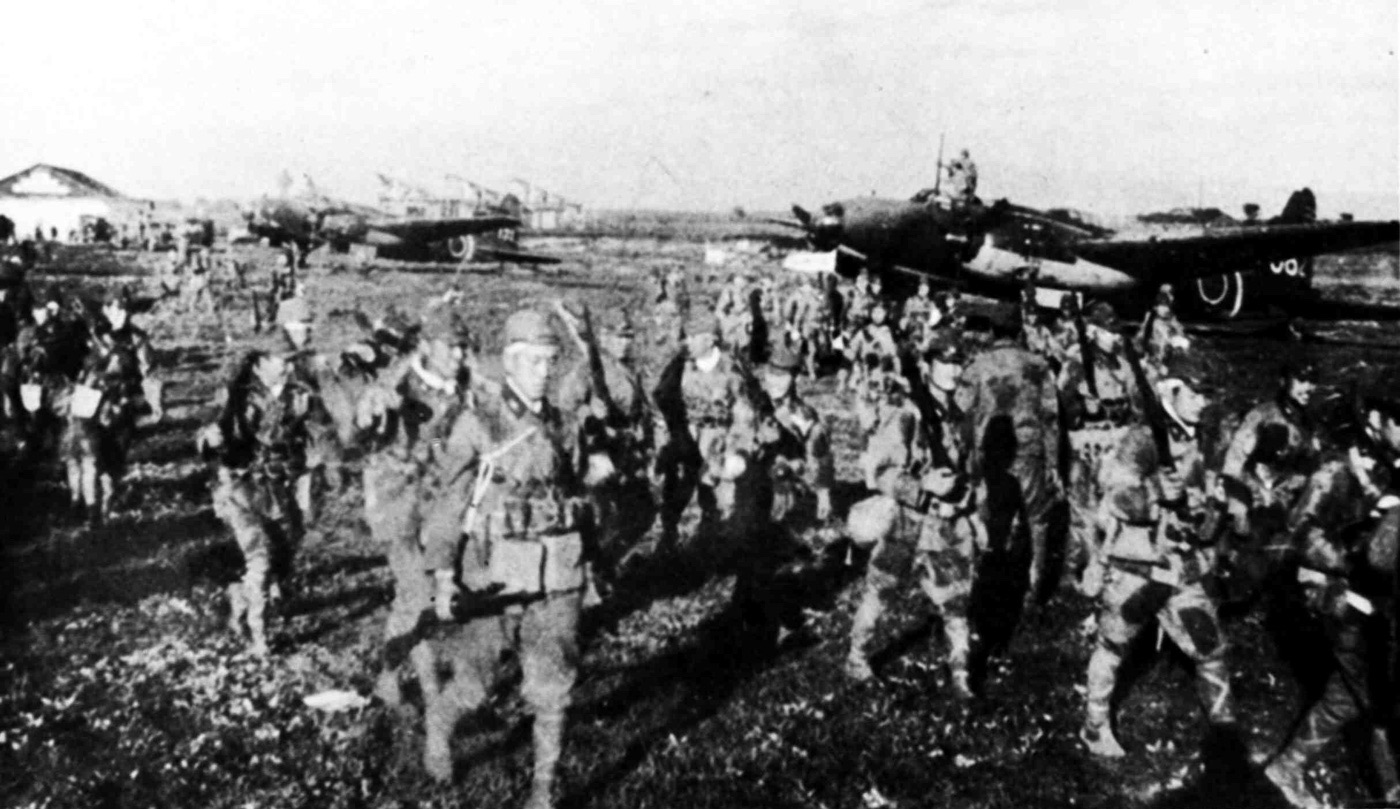
The paratroopers were carried by transport aircraft to the target airfields, either parachuting in or crash landing onto the American airbase. Their tactics were straightforward — destroy or damage as many American aircraft and supplies as possible, and then hold the position to the last man. These initial attacks were directed at Buri, San Pablo, Dulag and Tacloban.
Buri and San Pablo saw the heaviest attacks with approximately 300 Japanese paratroopers coming down in the area. Many of these parachutists jumped from too low an altitude and crashed to earth, rendered unable to put up much of a fight when U.S. Army troops and airfield security detachments arrived on the scene.
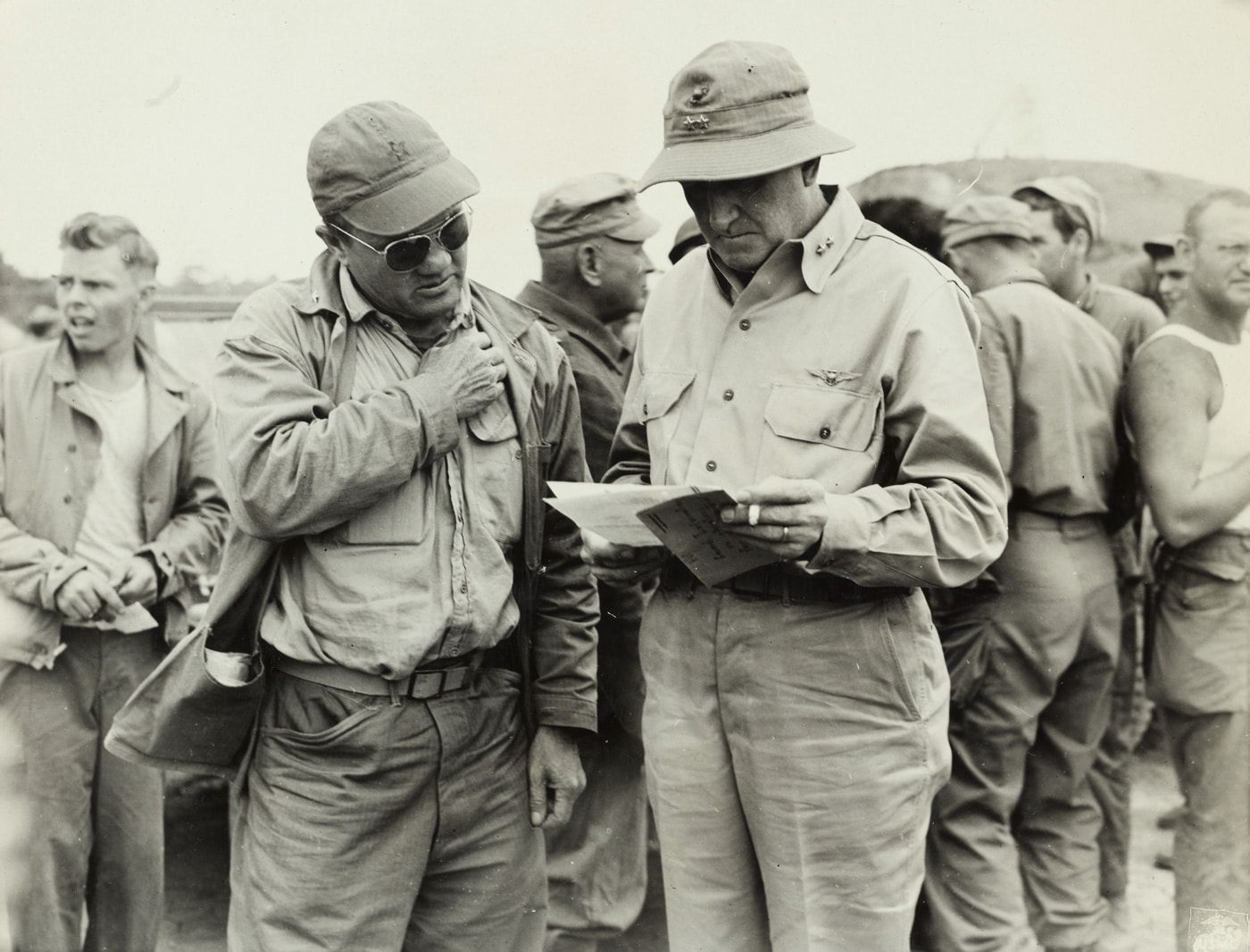
At Dulag and Tacloban, the Japanese transport aircraft were shot down by anti-aircraft fire, the paratroopers aboard unable to even attempt their attacks.
Breakdown of the Giretsu
The organizational details of the Giretsu unit were as follows: (note that in addition to the listed weapons, each commando carried HE and WP grenades plus a pistol:
- Command section (10 men)
- LMG team (lx Type 99 LMG)
- Messenger team
- Signal team
- 1st Team (4 men including section leader): lx Type 99 rifle, 2x Type 100 SMGs, 2x pole charges, 4x Type 99 AT charges
- 2nd Team (3 men): lx rifle, lx Type 99 LMG, lx pole charge, 4x Type 99 AT charges
- 3rd Team (3 men): Ix rifle, lx SMG, lx pole charge, 4x Type 99 AT charges
- 4th Team (3 men): Ix rifle, lx SMG, Ix Type 89 grenade discharger, lx pole charge, 4x Type 99 AT charges
Giretsu Weapons
In July 1945, just two months after the Giretsu raid on Yontan field on Okinawa, the U.S. Military Intelligence Division produced a pamphlet titled “Japanese Parachute Troops”. The following is G2’s assessment of the Japanese raider units and their weapons.
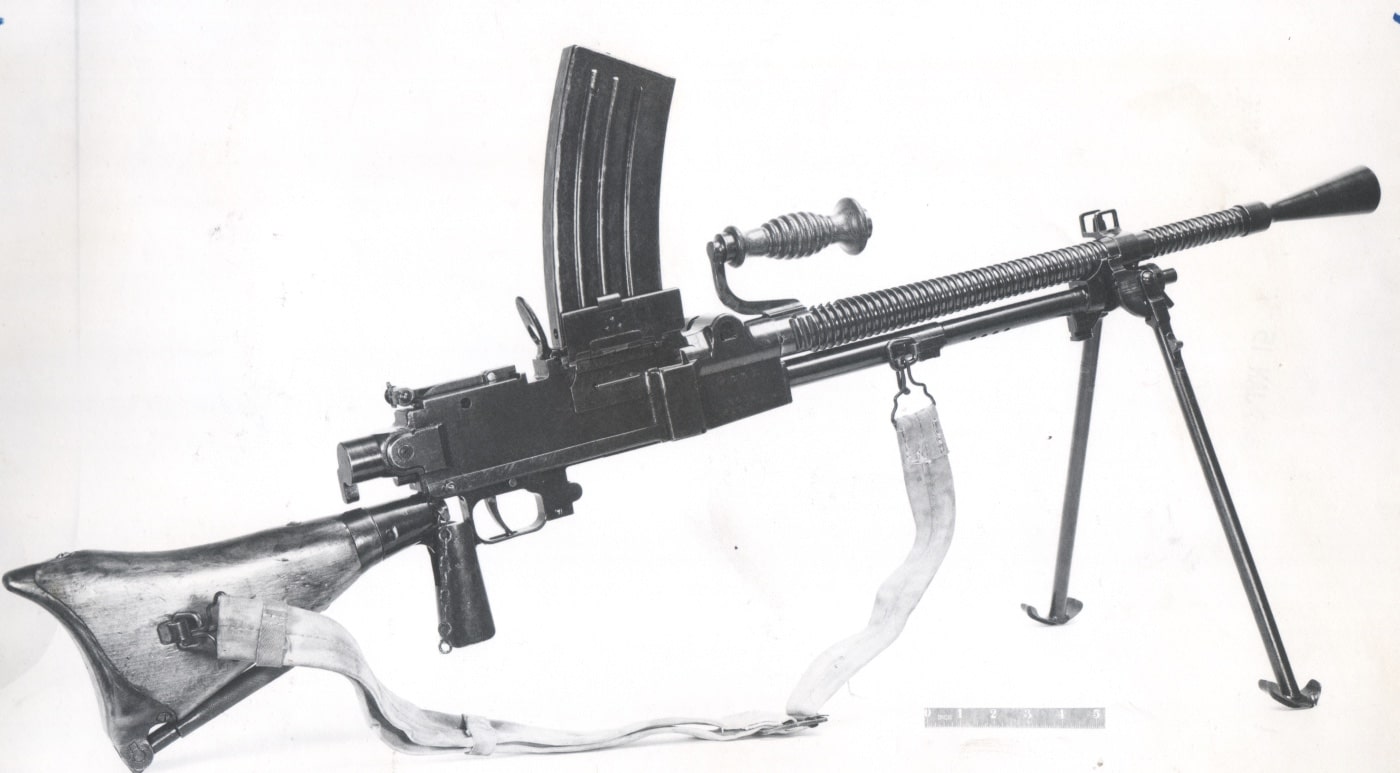
Japanese paratroopers’ weapons may be divided into two classes: those carried by jumping personnel, and those dropped separately by parachute. Except for minor items, it is believed that Army and Navy paratroopers will carry similar weapons and equipment. Weapons carried during the descent include the following: pistols; rifles and bayonets; submachine guns; light machine guns; grenade dischargers; rifle grenades and launchers; hand grenades; antitank grenades; flame throwers.
While the equipment carried by each paratrooper will vary according to the mission, it is believed that the rifleman carries a rifle complete with bayonet and 120 rounds of ammunition, three hand grenades, a smoke candle (probably self-projecting or hand thrown), binoculars, small pickax, shovel, and a luminous compass. The light-machine-gun operator carries a light machine gun, with two full magazines, bayonet, and cleaning and preserving material, and two hand grenades. The assistant light-machine-gun operator carries a pistol, 27 rounds of pistol ammunition, 180 rounds of light-machine gun ammunition, a magazine loader, and three hand grenades. The grenade-discharger operator, with pistol and 27 rounds of ammunition, carries the discharger, six shells, and two hand grenades.
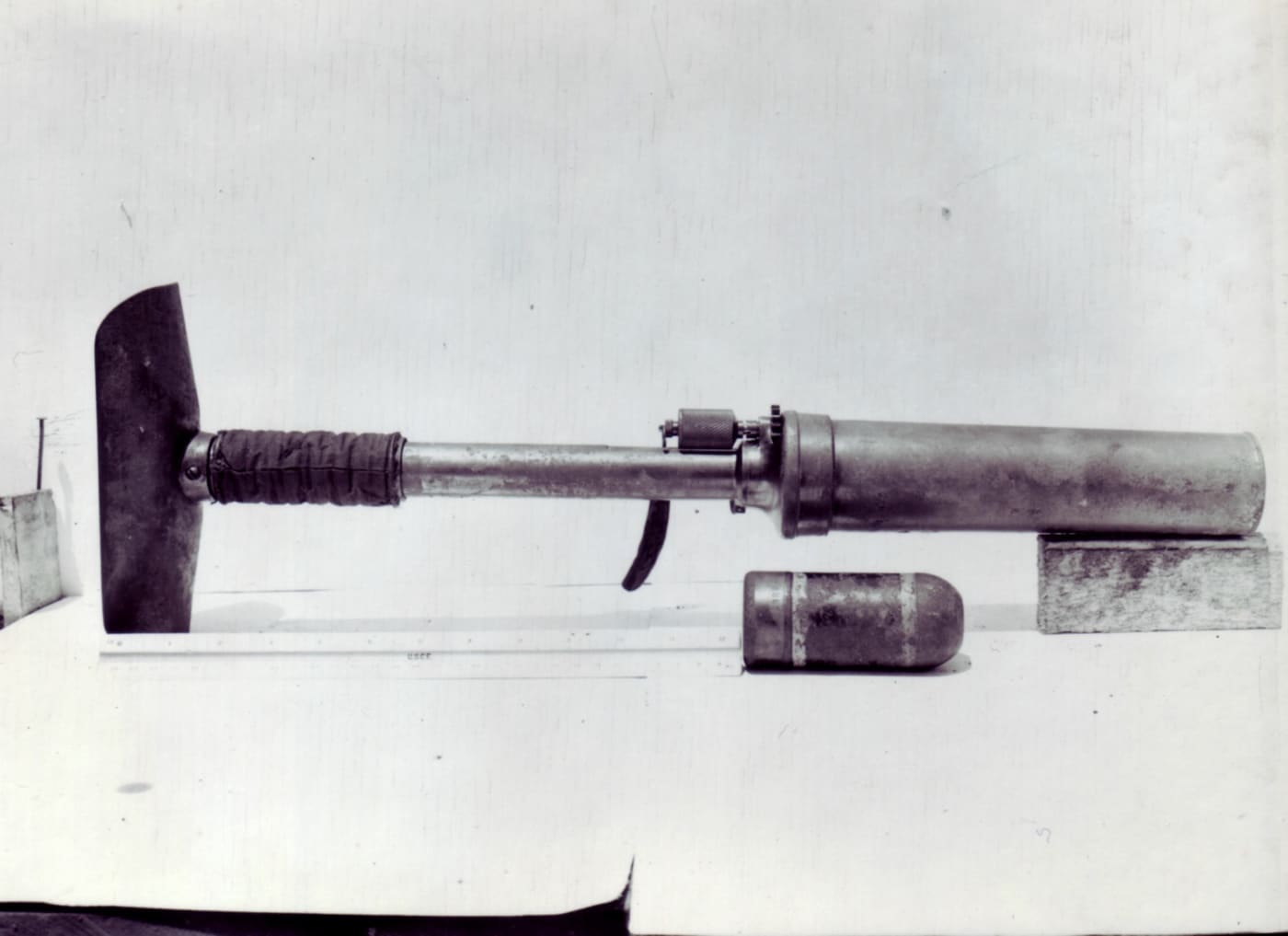
This equipment is subject to considerable variation depending on the assigned mission. Two days’ rations, some medical supplies, and a luminous compass are normally carried by everyone. Standard demolition charges may be carried. Signal equipment will include portable receivers and transmitters, probably constructed as transmitter-receiver units; several different types of this radio equipment have been recovered.
Pistols
The Type 14 (1925) and the Type 94 (1934) 8-mm pistols are usual paratroop sidearms. They are semiautomatic, recoil-operated pistols and fire interchangeable, rimless, ball ammunition.
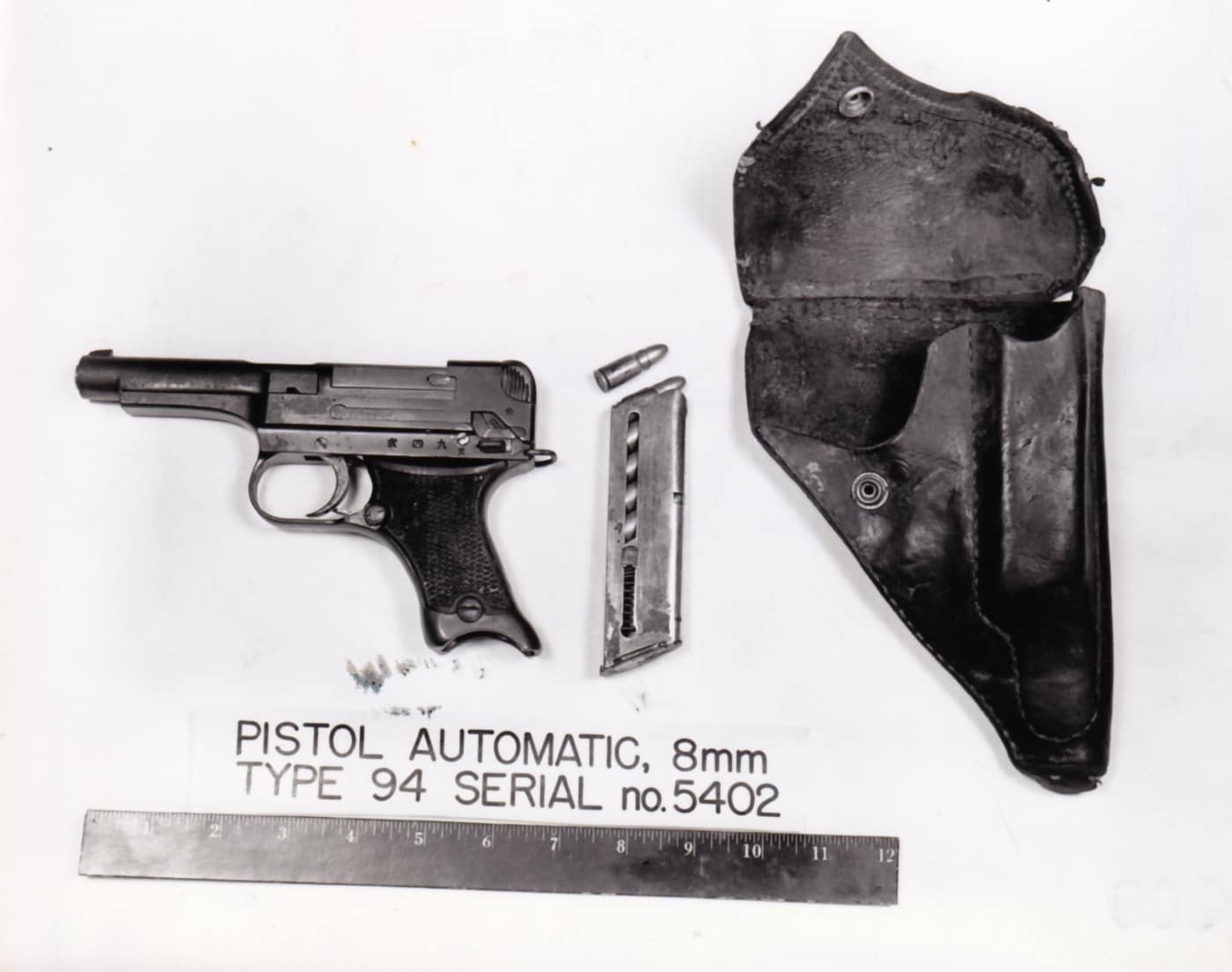
Type 94 (1934), though a later model, is believed inferior because of poor design and workmanship. It has been reported that some paratroopers have carried .25-caliber automatic pistols, apparently for suicide, but these are not believed to be issue weapons.
The Type 2 Rifle
The Type 2 is the standard paratroop rifle. Although take-down rifles are inherently weak, the design and good workmanship make this weapon one of the strongest of its type.
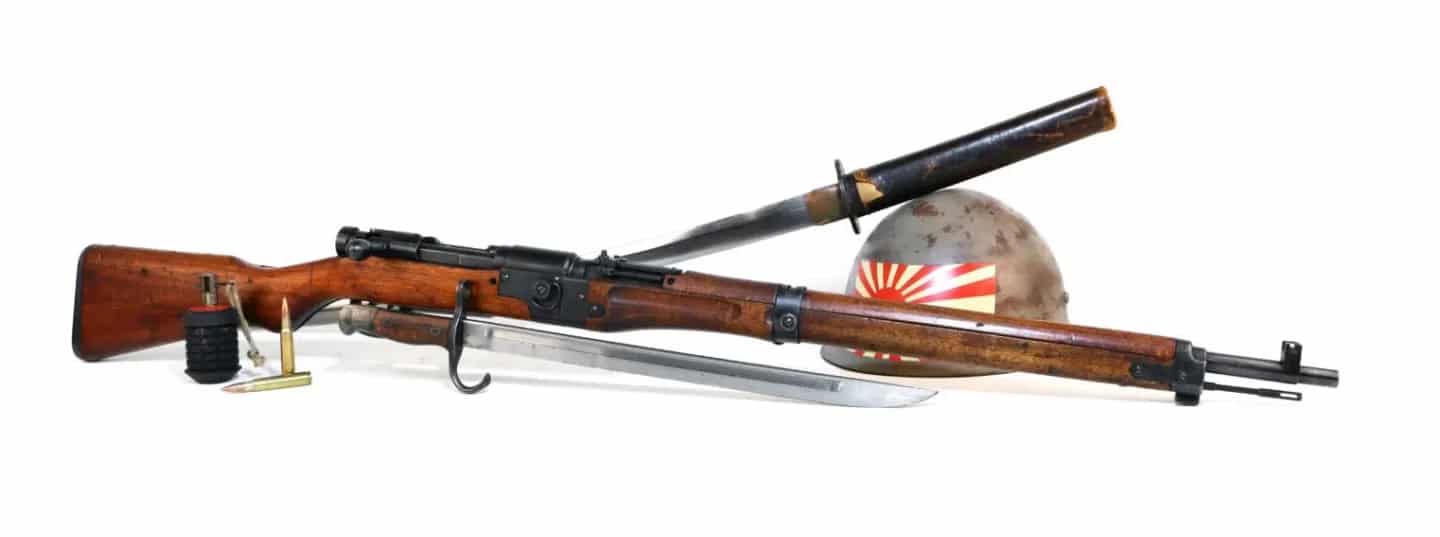
The barrel-receiver joint, consisting of a heavy locking lug and cross-key, represents considerable improvement over the method employed in the Type 99. The monopod has been omitted from this rifle, and the bolt handle is not detachable.
Submachine Guns
The first submachine guns known to be used by the Japanese were of Solothurn and Bergmann designs and were manufactured in Germany. The Japanese also are known to have used Thompson submachine guns captured from the Chinese.
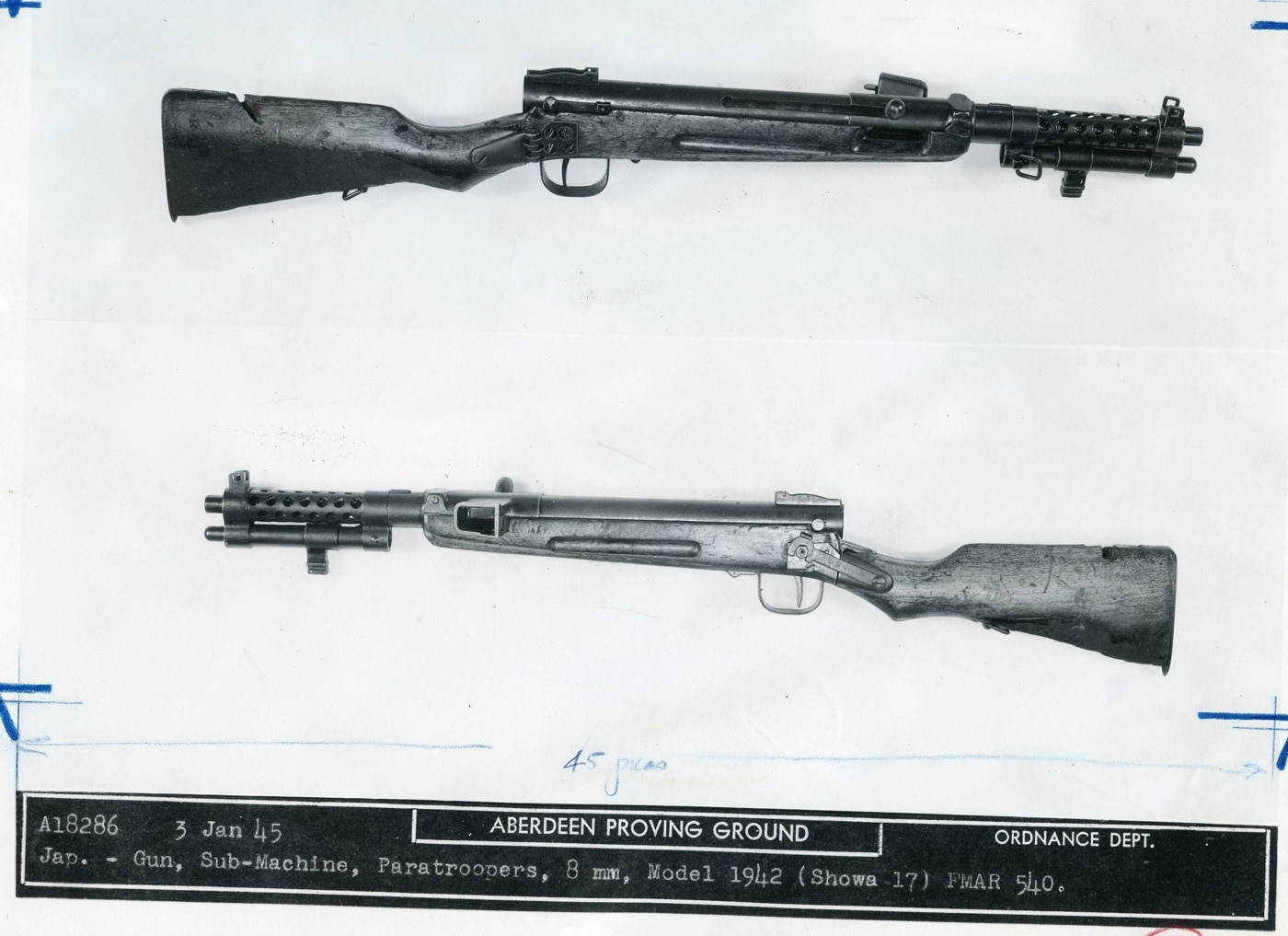
The present standard submachine gun, however, was designed and is manufactured in Japan. It is the Type 100 (1940) 8-mm submachine gun, of which at least two versions exist. Both versions of Type 100 (1940) 8-mm submachine gun are straight blowback-operated, and, according to Japanese sources, fire standard 8-mm pistol ammunition. However, a recent test firing, using 8-mm pistol ammunition, proved unsuccessful. It is not known whether incorrect 8-mm ammunition was used, or whether the weapon itself was defective. The weapons are fed from curved, box-type magazines mounted on the left. The ejection port is on the right.
Operation Gi: The Yontan Field Raid
The most spectacular raid conducted by the IJA “suicide commandos” took place on the evening of May 24, 1945, and was directed at the large U.S. airbase at Yontan Field on Okinawa. This attack coincided with the seventh “Kikusui” offensive planned for the following day.
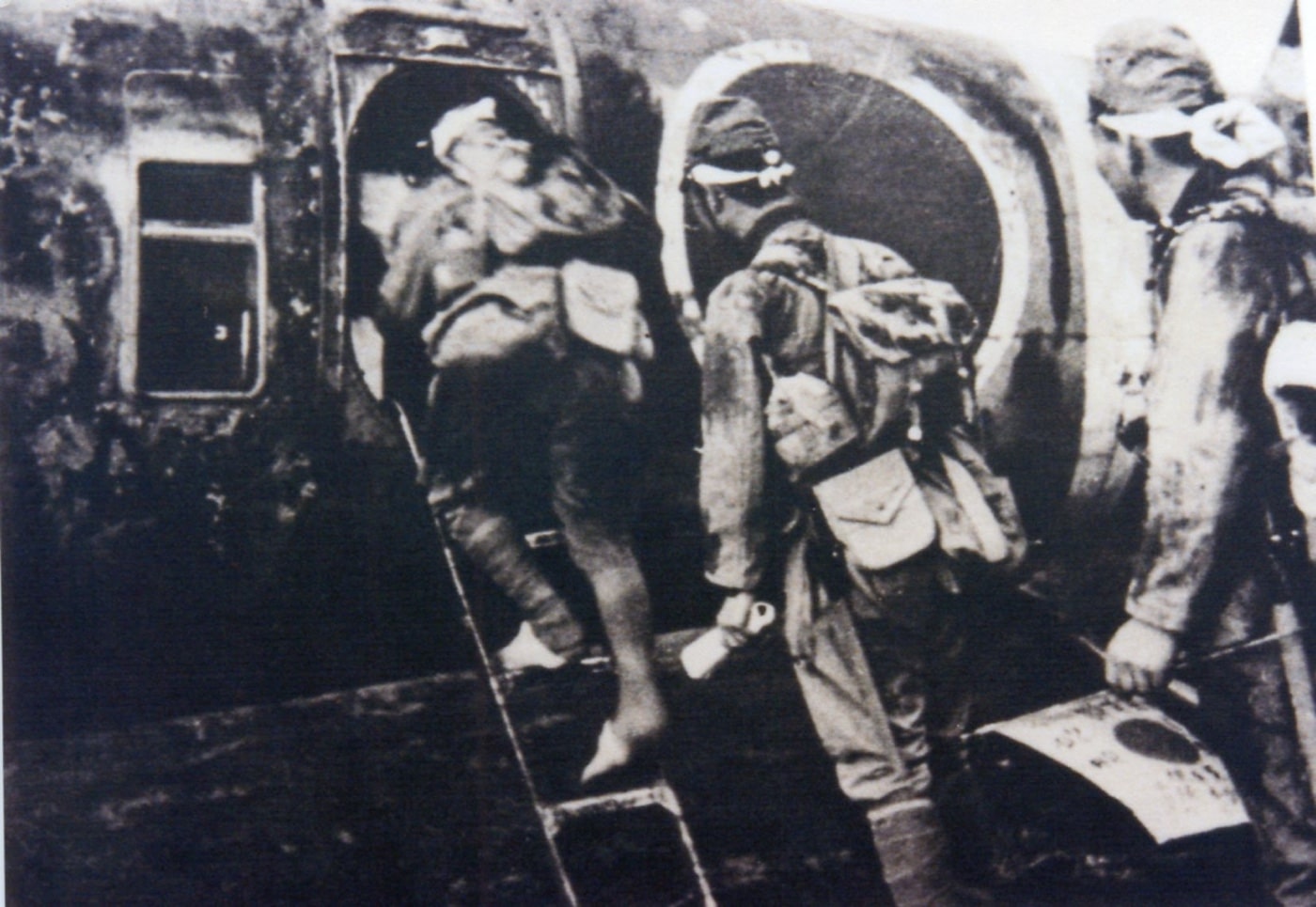
The transport aircraft were five Mitsubishi Ki-21-IIb “Sally” bombers, modified to carry up to 14 commandos and their deadly equipment.
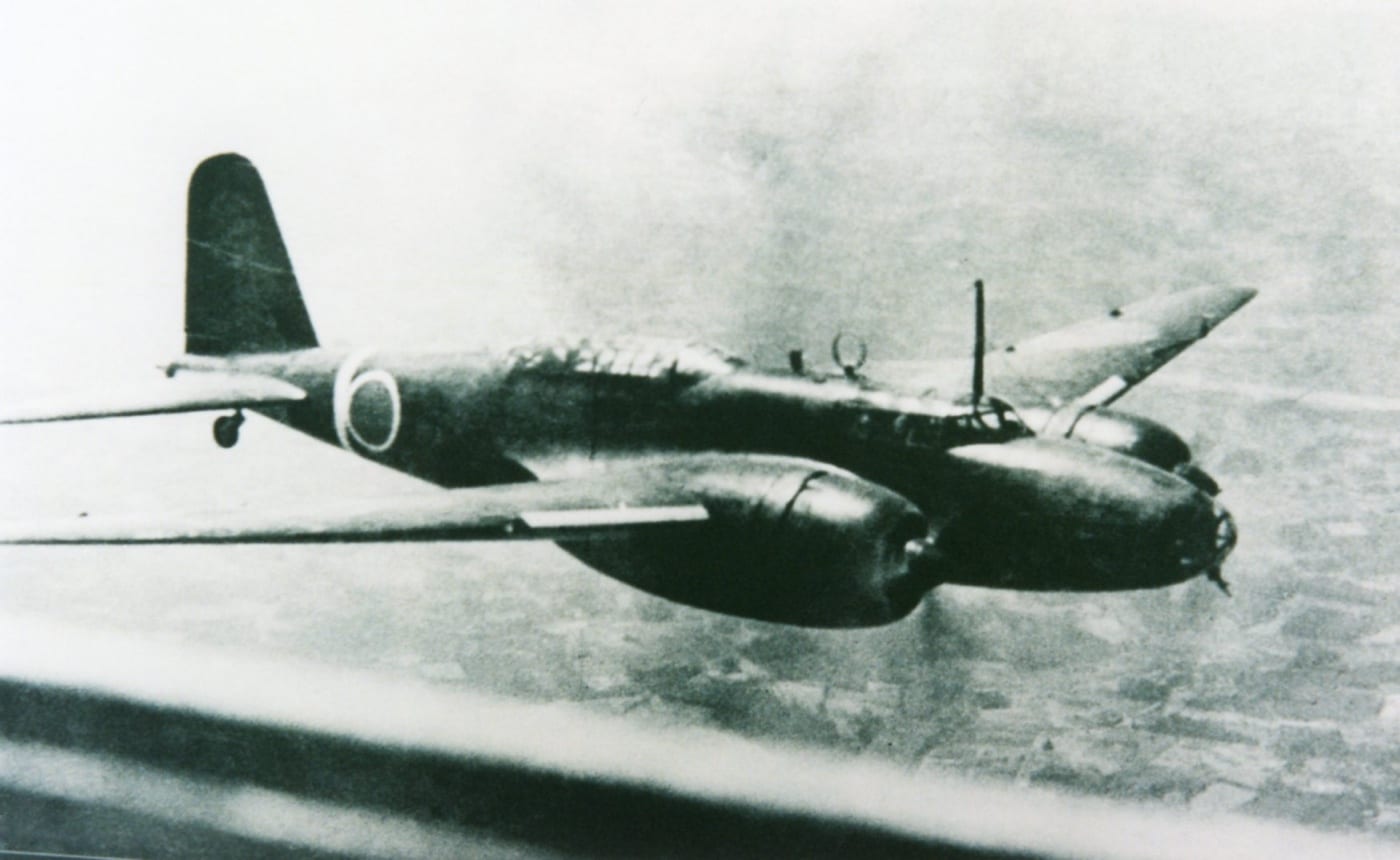
Approximately 50 bombers had been sent in advance of the raiding force in hopes of drawing the attention of American night fighters and anti-aircraft defenses and masking the raiders’ approach.
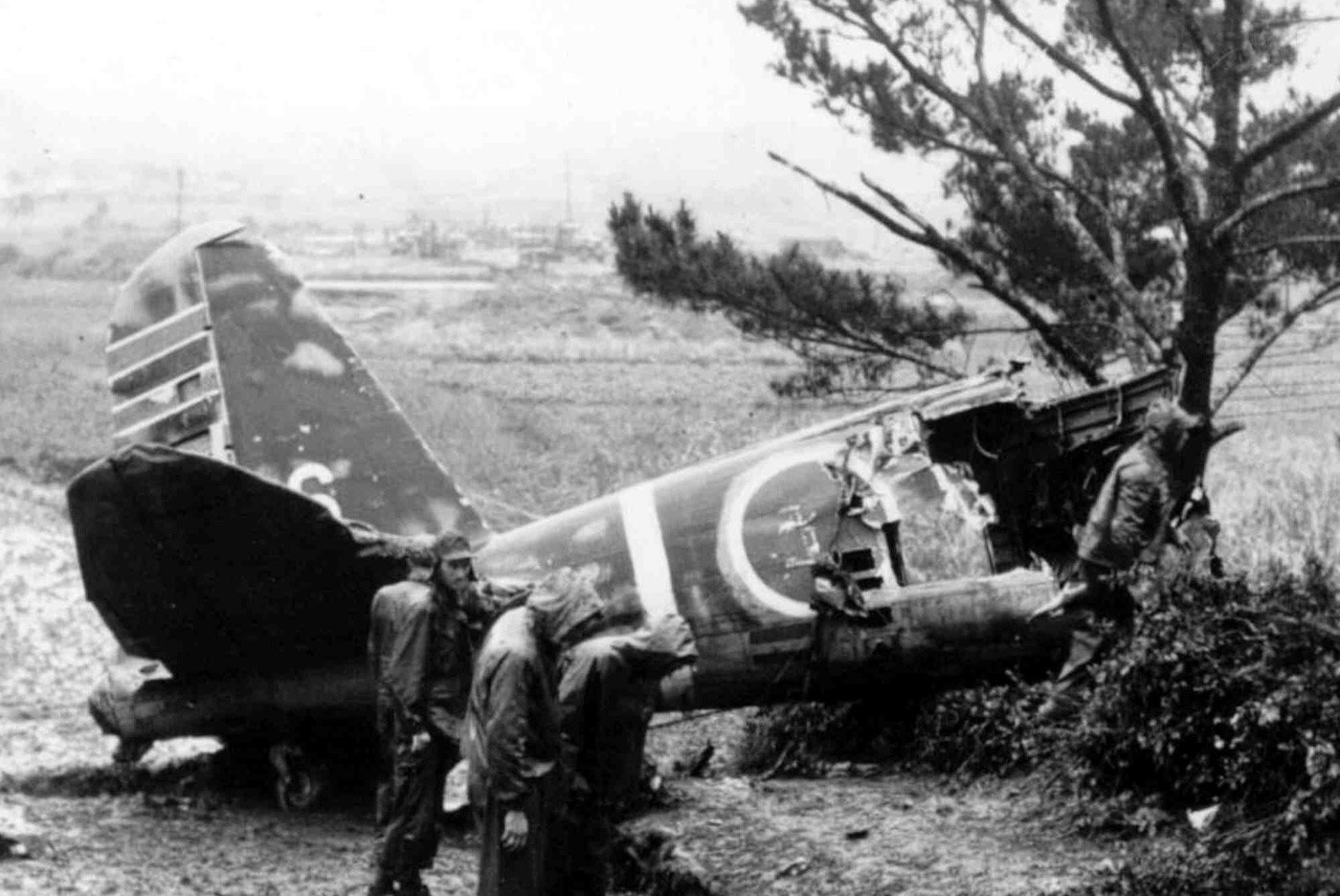
The diversionary bombing raids did not prove successful, and four of the modified Sally bomber-transports were shot down by American interceptors, leaving just five transports to approach Yontan Field at about 10:30 on the night of May 24th.
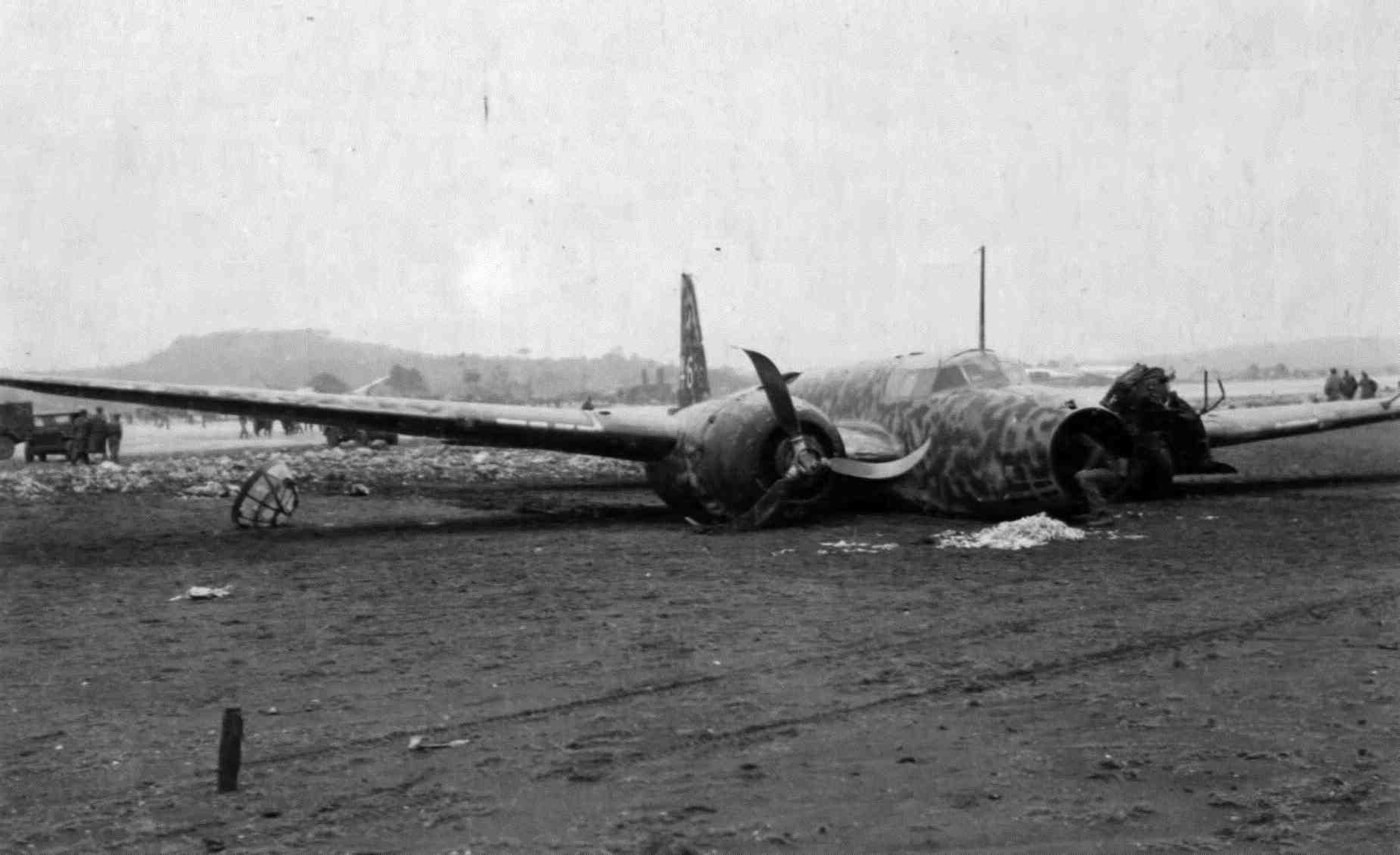
American anti-aircraft positions devastated the transports as they approached the field at low altitude, shooting down four of the five Sallys. Some commandos might have been able to escape from their shot down transports and participate in the airfield attack, but this is not confirmed.
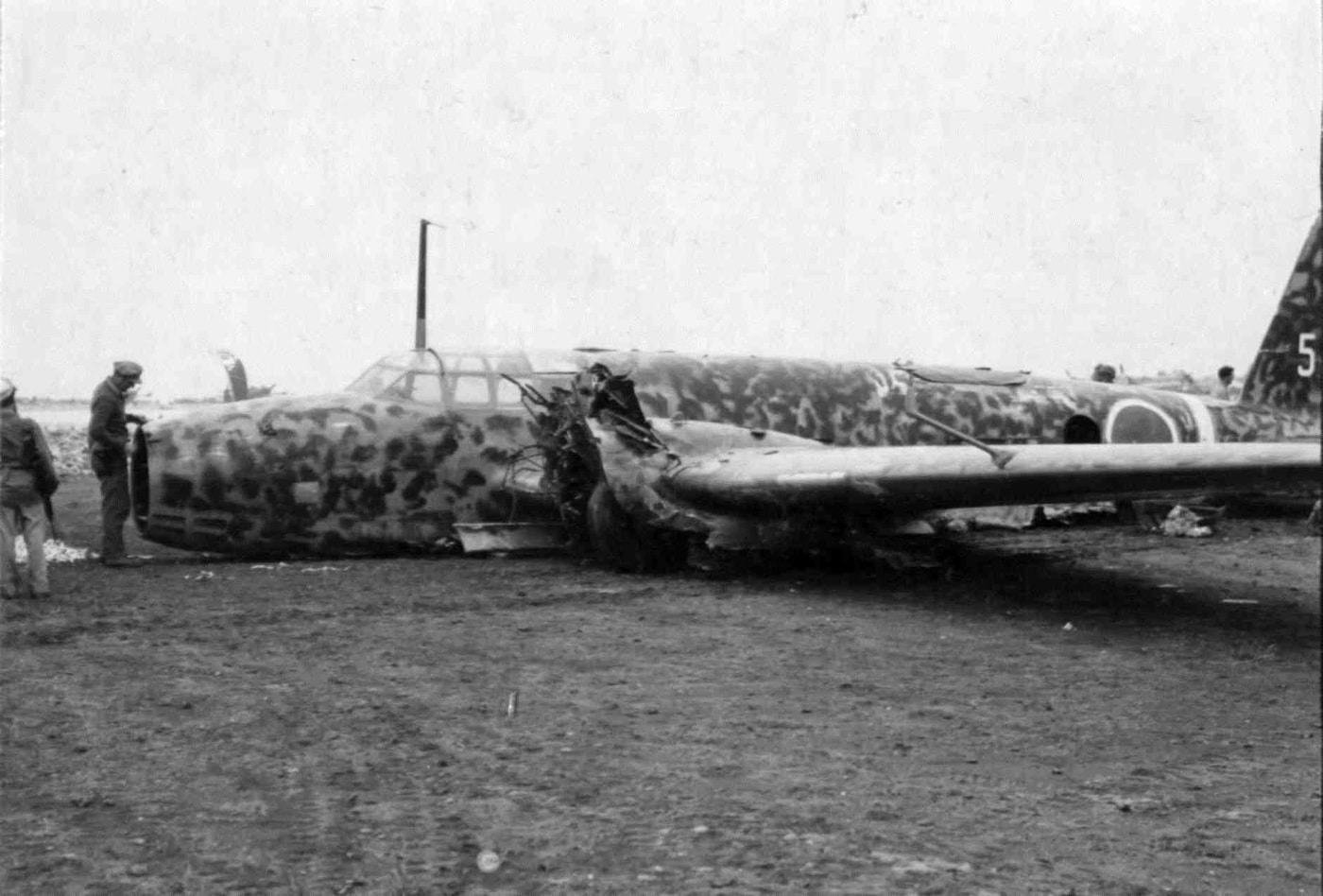
One of the Sally transports had its wing blown off, which came down on an anti-aircraft position, temporarily burying the gunners. The remaining Sally belly-landed on the runway, coming to rest near a control tower. A dozen commandos emerged from the nose and immediately attacked any nearby aircraft with satchel charges and phosphorus grenades.
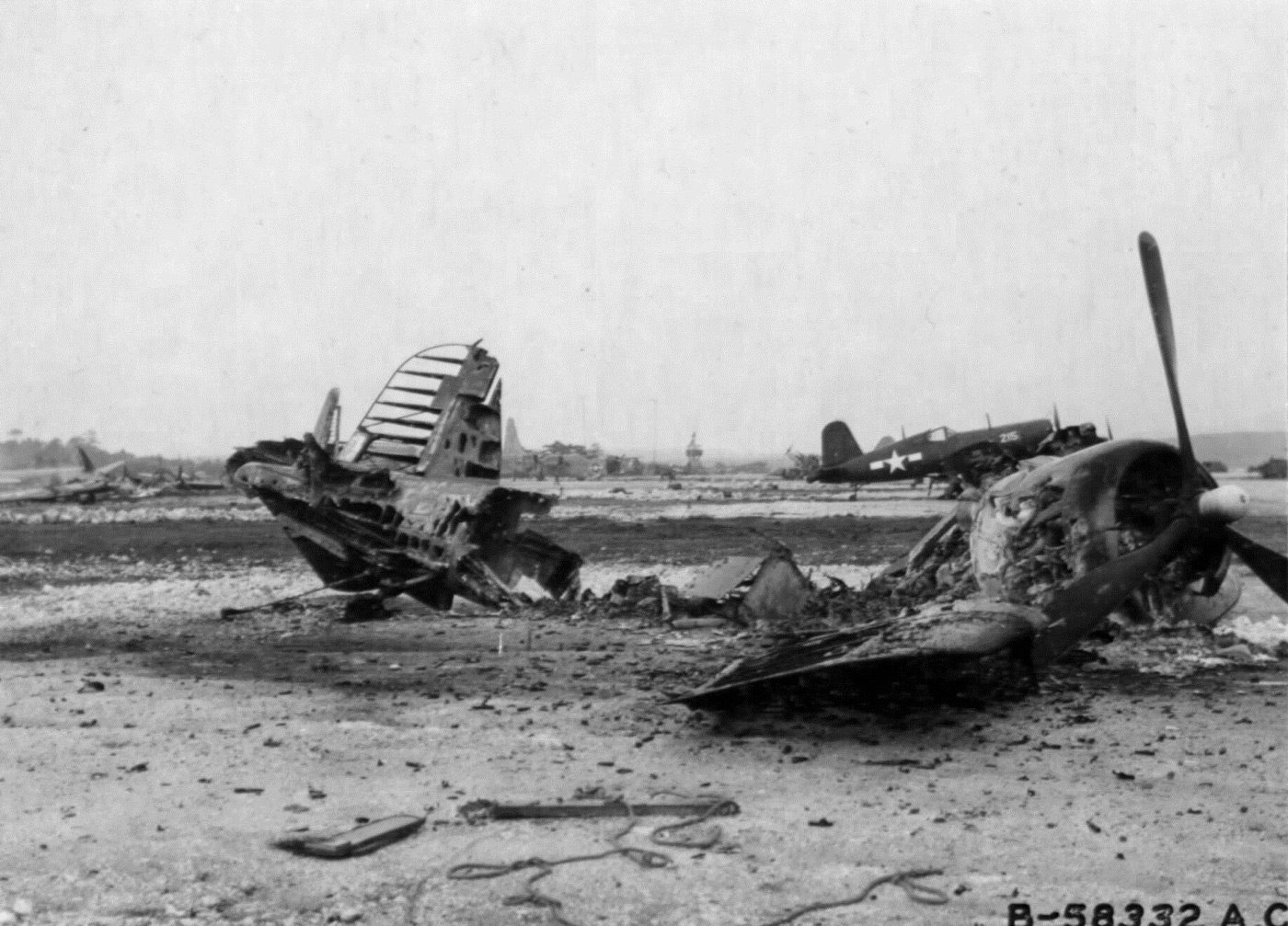
The commandos also managed to ignite a fuel dump containing more than 70,000 gallons of aviation gasoline. Spectacular geysers of flame erupted into the night air. For a few hours, chaos reigned at Yontan Field until Marine troops arrived and killed the last of the raiders.
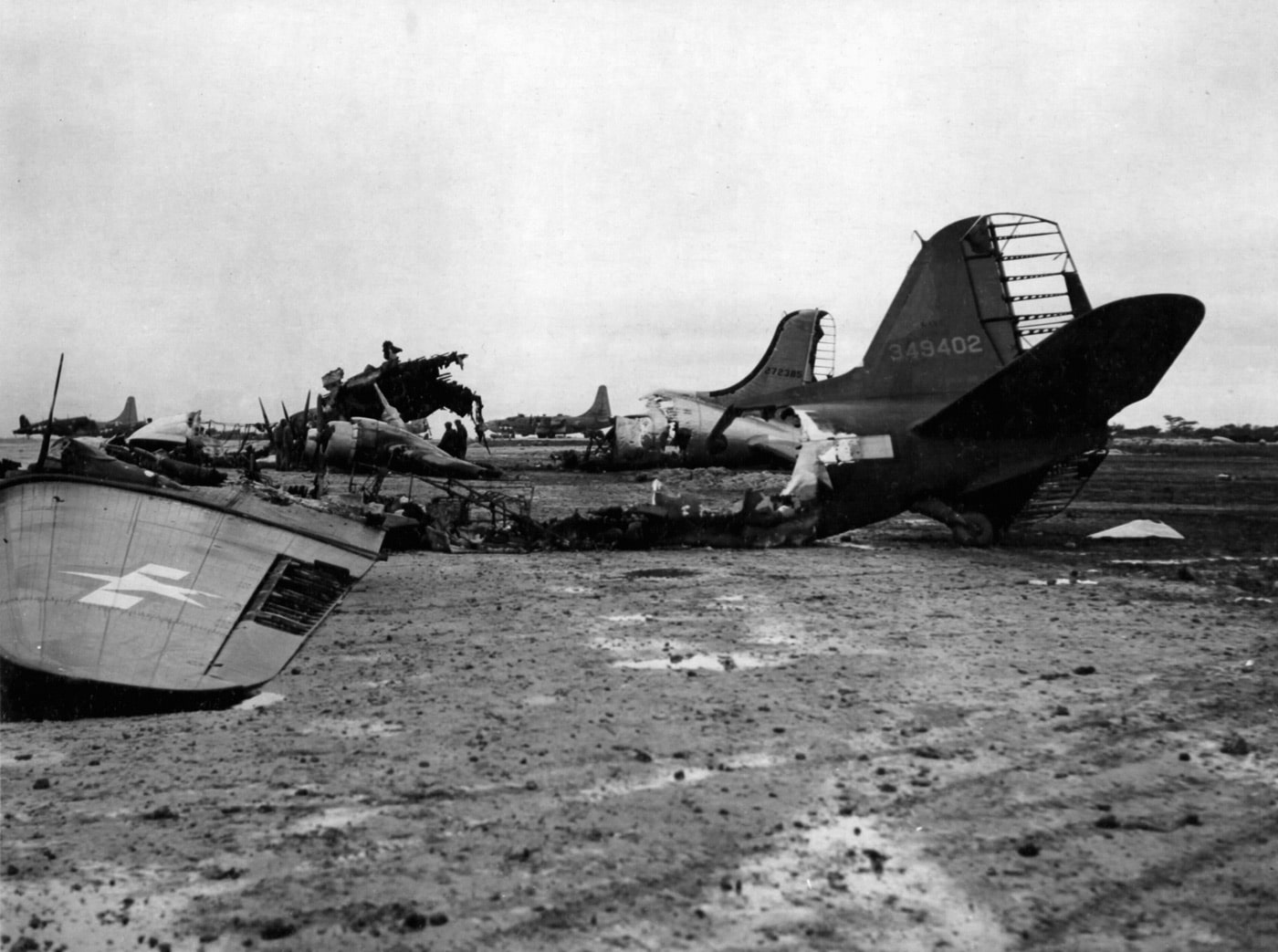
American forces lost two men killed and suffered 18 wounded. Nine aircraft were destroyed and more than 25 were damaged. All the commandos were killed, but the last man was not found until nearly 1pm the next day hiding in the brush. In all, 69 Japanese commandos and airmen were killed in the raid.
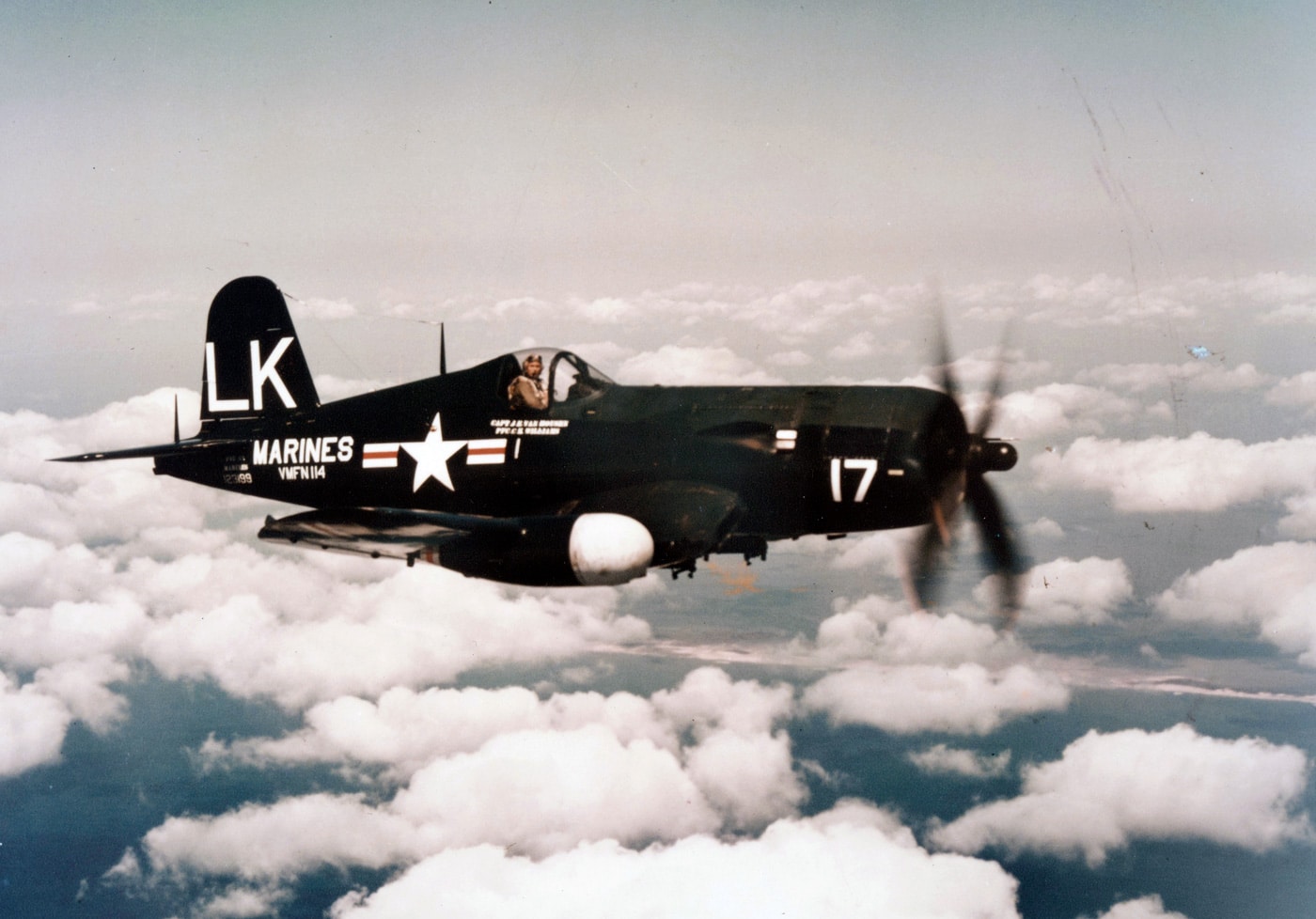
U.S. Aircraft Destroyed
- 3 Vought F4U Corsair fighters
- 2 Consolidated PB4Y Privateer patrol bombers
- 4 Douglas R4D (C-47) transports
U.S. Aircraft Damaged
- 22 Vought F4U Corsair fighters
- 3 Grumman F6F Hellcat fighters
- 2 Consolidated PB4Y Privateer patrol bombers
- 2 Douglas R4D (C-47) transports
Aftermath
Significant Japanese kamikaze attacks were relaunched on May 25th and May 27th, and it is unlikely that the attack on Yontan field had much of an impact on the number of American fighter aircraft available to defend the fleet. Yontan field was operational again by the afternoon of May 25th, and most of the damaged aircraft were repaired or replaced within the week. During the late summer of 1945, the Giretsu planned another airborne commando raid on the Okinawa airfields. This raid was more ambitious as it called for the airborne delivery of lightly armored “gun trucks” carried to the target by gliders.
Proposed for the end of August, Japan’s surrender interrupted what would have been a spectacular suicide commando raid.
Editor’s Note: Please be sure to check out The Armory Life Forum, where you can comment about our daily articles, as well as just talk guns and gear. Click the “Go To Forum Thread” link below to jump in!
Join the Discussion
Continue Reading
Did you enjoy this article?

 587
587






